Are your students disinterested and tired of the traditional ways of learning characterization? Have you been searching for a really fun, student-centered, interactive way to eliminate their boredom? Well, look no further! I present to you a wonderful student-collaboration character analysis activity that will get your students involved and excited for their author biography study, for creative writing, and character development. In addition, they will get some much needed interaction even if it’s just virtual!
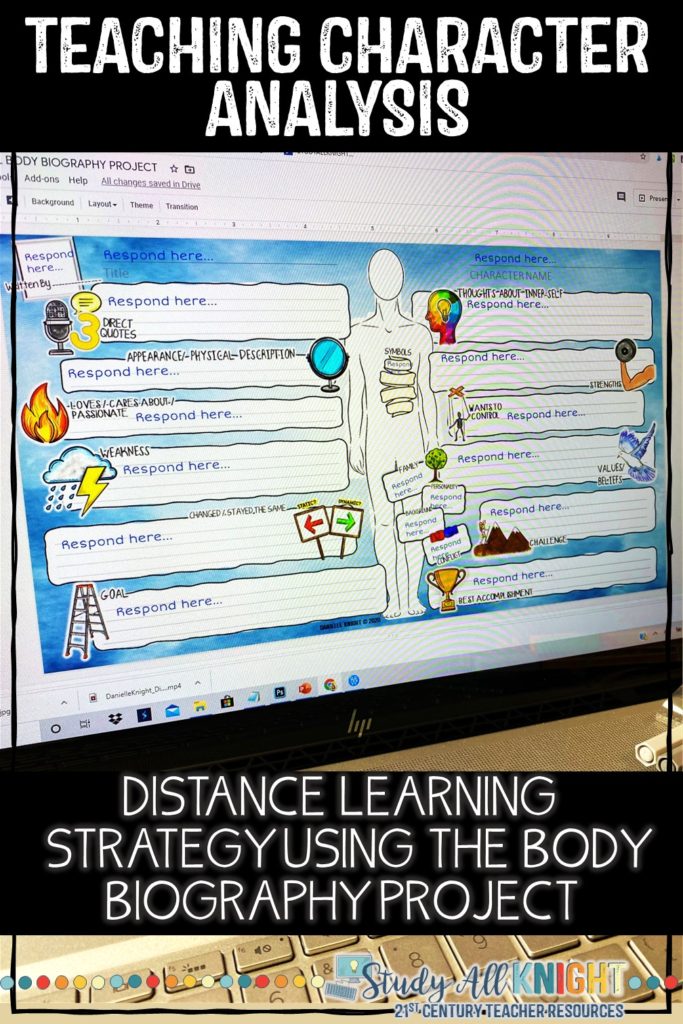
About the Digital Body Biography Project
Using body biographies in your classroom can be a complete game changer! This tech-infused project is an excellent representation of how students can conduct character analysis for a notable person or biography your students are studying in class. Typically, at the upper elementary, middle school, and high school levels, we rely on just discussing character traits. We want our students to infer tangible traits and values from accurate details found in the text.
This character analysis task really engages your students to infer those traits but also allows them to show their knowledge by applying those traits as they create a body biography which includes details from the person’s perspective. The project provides an opportunity for your students to explore together the supporting reasons for the traits they have chosen for their character’s slide.
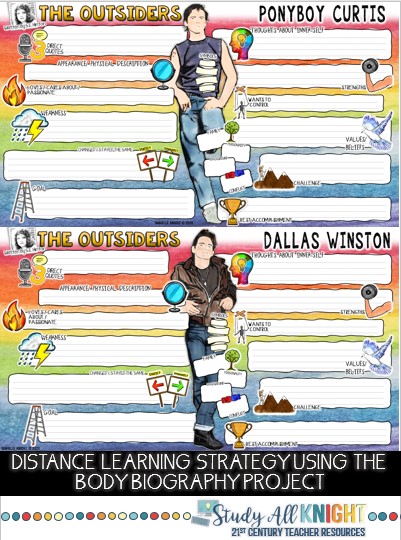
What’s the Objective?
The student objectives for the Digital Body Biography Project are as follows:
- Review what is supportive evidence.
- Define the literary term “character trait” and explore how to provide details that support their inferences
- Use the novel, class notes, and web resources to research the character (subject), then cite evidence to find accurate and descriptive word choice.
- Fill out the body biography slide.
Group work during this character analysis should promote:
- Intellectual understanding, abilities and skills.
- Communication, cooperative and teamwork skills such as planning. management, leadership and peer support.
- Personal growth (increased self esteem and self confidence).
Categories of the Digital Body Biographies
Sometimes deciding what we all need to look at in order to fully analyze a character can be difficult. These great body biographies breaks everything down into categories. Teaching the body biographies can be tricky. In order to teach these categories, I would suggest doing a self character analysis. In order to further your project, you can get on a Zoom meeting and have your students present their work or make it a PowerPoint or Google Slide they share with you and their classmates.
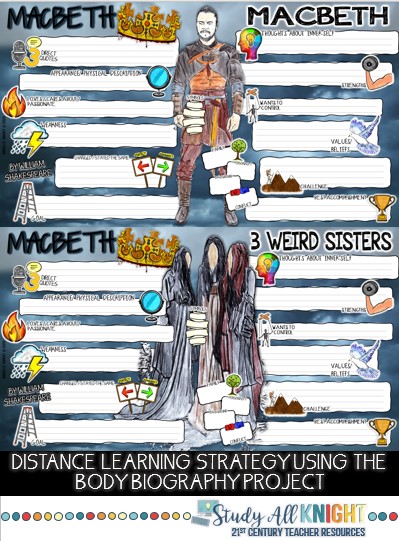
Direct Quotes
Three direct quotations from the story that sum up the character and add to an understanding of the character. These quotes do not necessarily need to be spoken by the character because what a character says is a big part of who they are. Character analysis needs to be thorough. If your character is quiet, you might need to use what another character says about the character your analyzing.
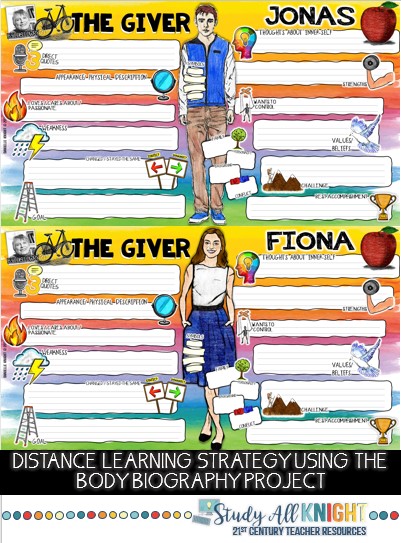
Values / Beliefs
Everyone has values including the characters you’re analyzing. If you’re reading To Kill a Mockingbird it’s one of the biggest themes in the text. What are your character’s best qualities? The values and beliefs can trickle into what their weaknesses are as well. Weaknesses, also known as vices are the character’s flaws they have. Even the most likable character has a few things we do no like about him or her and that’s important to note in a character analysis because no one is perfect.
Most Important / Loves
This should represent what this character loves most.
Thoughts about inner-self / Appears to others
How people view you can be a huge part of who you are. This can be seen in the classic The Outsiders by S.E. Hinton. Consider both how your character appears to others on the surface and what you know about the character’s inner-self (what the character really thinks about their own self).
Wants Control
Control is something that we see in a variety of fiction and nonfiction texts. Whether it’s the gods wanting to control the world or women taking the lead, it’s a big theme in a variety of texts. What is an example of how your character tries to seek control?
Symbols
One cool thing authors often do is make their characters a symbol for something else. When doing character analysis, sometimes we need to really delve into what that is. You can start by asking what objects can you associate/relate with your character? Colors can also have a symbolic meaning.
Goals
Everyone needs a goal, and all characters have them. The character’s motivation to complete the goal is often what pushes the story forward. You want to encourage your students to ask the following:
- What does this character want?
- What actions do they take?
- These actions often create the conflict. How does this character’s goals create the conflict?
Sometimes understanding what the goal is will lead to what the character’s best accomplishment is. When your students are determining this point, you want them to ask:
- What is this character’s best achievement?
- What is their proudest moment?
Challenge
Challenges are what create conflict in the text; it’s what drives the story forward. Often times in the text, more will be added to the initial problem to create more conflict and bigger challenges. Your students should ask:
- What is standing in your character’s way?
- What is holding them back from achieving their goal?
- Is this someone? Or a character flaw? An event?
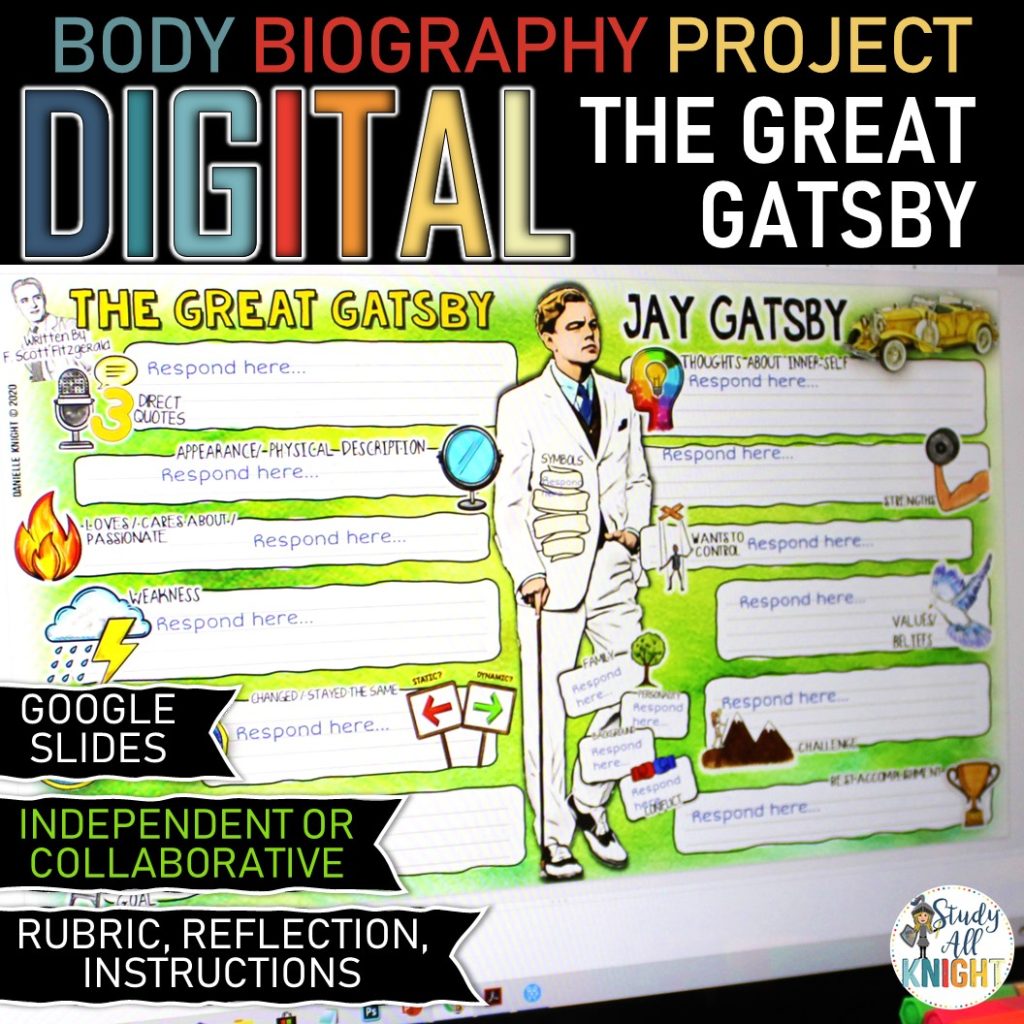
Physical Appearance/ Description
When we are reading a story, we like to know what the character looks like which is often why we are drawn to movies. When you look at the physical description, you’re looking at the defining traits or features about the character. These are aspects that are visually apparent, knowing nothing else about the person. The first thing you see when you look at someone could be their hair, clothes, nose, or figure.
Dynamic – Stayed the Same / Changed
Everything above leads us to this moment leads us to this question: Is this character static or dynamic? When your students are trying to determine whether a character is static or dynamic, they should ask: Are there any changes that this character has “undergone?” Changes are notable in the text are usually within the character. Could be outlook, insight or understanding. Commonly, changes in commitment, in values, allegiance, stature. Not all characters are dynamic. Find evidence of both.
How To Grade
Using the provided rubric, it is simple to grade this character analysis group project. Each item on the grading rubric is given a specific amount of points. You can alter the points if you choose.
Remember the 4 C’s for 21st Century Learning
- Communication: They are working together to problem solve. Students need to be able to communicate their ideas and thoughts to one another in order to complete their body biography.
- Collaboration: Students form roles within the group. They learn how to work together towards a common goal, not against each other. They learn how to bounce ideas off one another, and not shut down other students thought.
- Critical Thinking: Encourage students to analyze, to organize, to evaluate and to implement strategies they have previously learned in order to complete their project.
- Creativity: This allows students to think outside the box to come up with possible assets to embellish their projects. The ideas won’t just jump out at them- they will need to use a little creativity to depict their notable person’s body biography.
-
 Macbeth, Body Biography, Distance Learning Version$4.99
Macbeth, Body Biography, Distance Learning Version$4.99 -
 The Great Gatsby Digital Body Biography, Digital Learning | Distance Learning$4.99
The Great Gatsby Digital Body Biography, Digital Learning | Distance Learning$4.99 -
 Wonder Novel Study, Digital Body Biography, Digital Learning | Distance Learning$4.99
Wonder Novel Study, Digital Body Biography, Digital Learning | Distance Learning$4.99 -
 Greek Gods, Greek Mythology Digital Body Biography | Distance Learning$7.99
Greek Gods, Greek Mythology Digital Body Biography | Distance Learning$7.99 -
 Digital Body Biography, Any Novel, Text, or Film, Digital Learning | Distance Learning$4.99
Digital Body Biography, Any Novel, Text, or Film, Digital Learning | Distance Learning$4.99 -
 The Outsiders Body Biography Project, Digital Learning | Distance Learning$4.99
The Outsiders Body Biography Project, Digital Learning | Distance Learning$4.99 -
 Body Biography Project Bundle, for Any Novel, Short Story, Play, or Film For Print and Digital$4.99
Body Biography Project Bundle, for Any Novel, Short Story, Play, or Film For Print and Digital$4.99 -
 The Outsiders Body Biography Project Bundle, For Print and Digital$6.99
The Outsiders Body Biography Project Bundle, For Print and Digital$6.99
Collaborative Work Teaching Tips
Whenever students are working in groups whether that’s in the physical classroom or digitally, it can be difficult to ensure they are getting everything out of the lesson you want them to. Here are some simple tips to help you with this adventure.
- Moving desks together or allowing students to work at a table works best for this activity.
- Can be assigned as a collaborative project or independently.
- If assigned at home, distance learning, remote learning, distribute the slides via your LMS. Consider a body biography presentation.
I hope your students find this project to be as engaging and educational as my students have. It truly is a fun project to watch and the end results are awesome. Good luck!
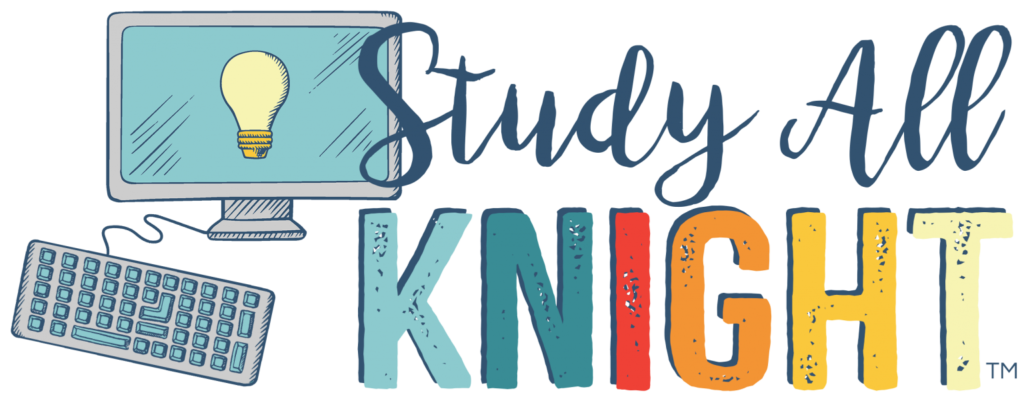
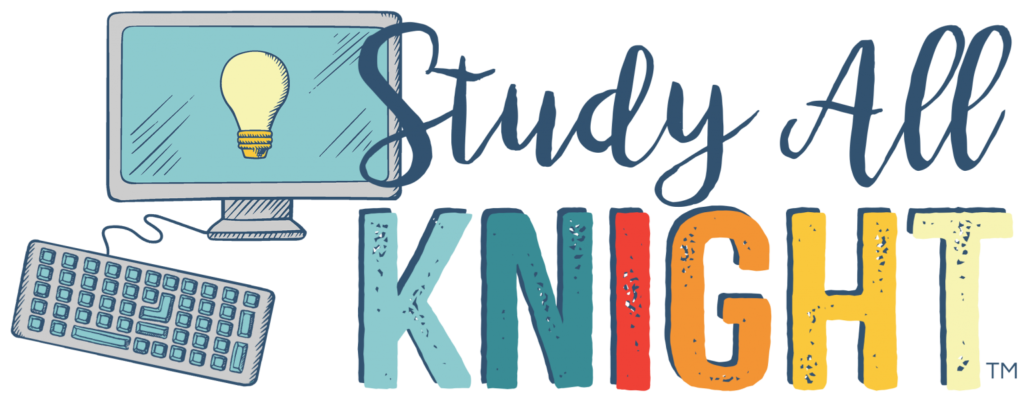
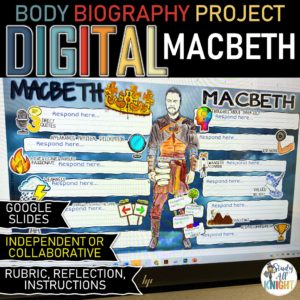
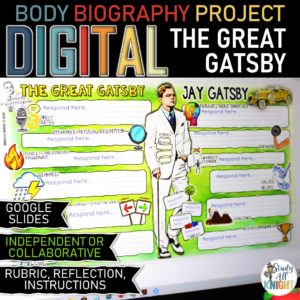
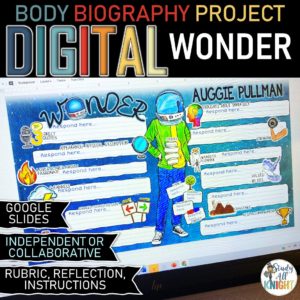
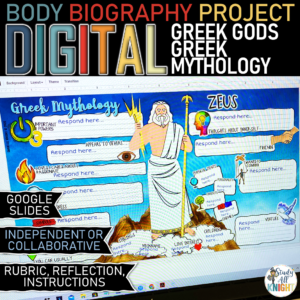
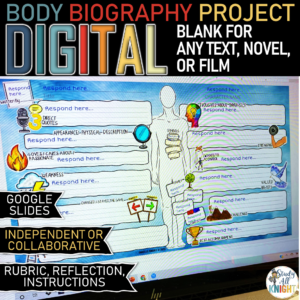
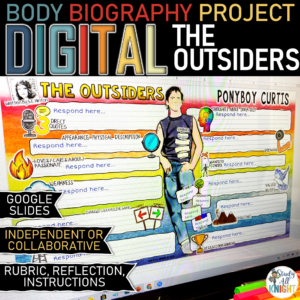
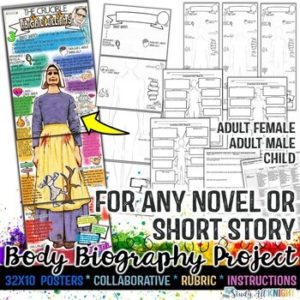
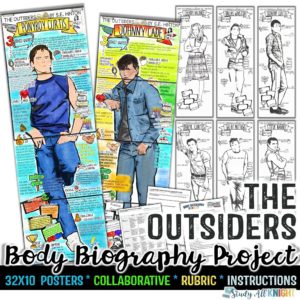

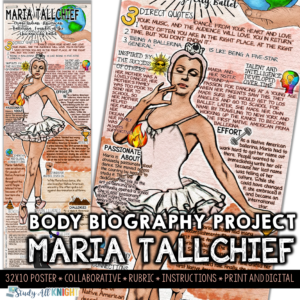
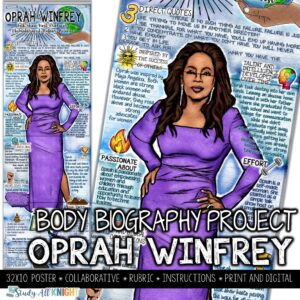
One Comment
Love all that you hsve put together